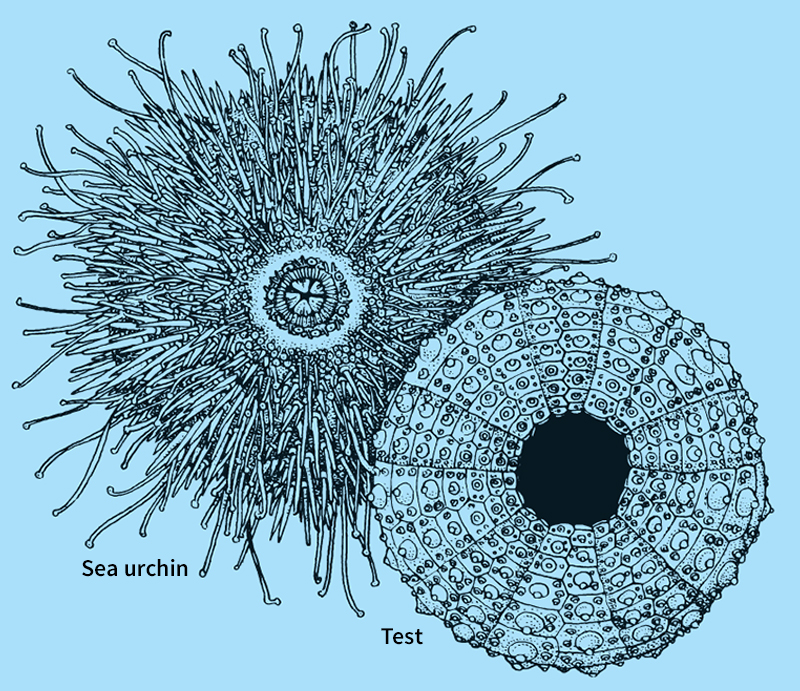Sea urchin is a sea animal with a rounded body covered with long, movable spines. It belongs to a group of spiny-skinned animals called echinoderms (see Echinoderm). Close-fitting skeletal plates lie under the sea urchin’s skin and form a shell called a test. The spines are attached to the test. In some sea urchins, the spines can reach more than 8 inches (20 centimeters) long. Sea urchins also have small, pincerlike structures that help them keep their surface clean. The animals may be black, brown, green, purple, red, or white. They measure from 2 to 10 inches (5 to 24 centimeters) wide and live in oceans around the world.
Sea urchins eat mostly plants found on rocks and on the sea bottom. A sea urchin’s mouth is on the underside of its body. The animal scrapes up food using a set of five hard teeth. Some sea urchins nestle in shallow holes that they dig into rocks using their teeth.

A sea urchin moves by pushing with its spines or by using its tentaclelike tube feet, which have suction disks at the ends. The animal’s tube feet also may function in respiration and as sense organs. Some sea urchins use their tube feet to cover themselves with broken shell bits and seaweed in an attempt to hide from predators, including crabs, fish, and sea otters. The reproductive organs of sea urchins are edible. In Japan, these organs, called uni, are considered a delicacy.
